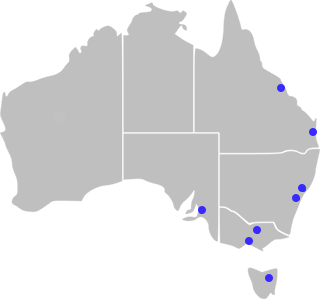| Quenched and Tempered Carbon Steel Plate | |
| Standard | Manufacturers Specification. |
| Size Range (mm) | Width 1525 to 3100. Length 4000 to 9000. (W and L are dependent on thickness) |
| Grades | 80, 400 & 500. |
| Thickness (mm) | 4 to 160. |
| Finishes | As rolled. |
| Condition | Quenched and Tempered. |
| Processing | Plasma and Oxy profile cutting. |
The download below provides detail of size range and thickness within the grades.
The information provided is for standard stock product and does not encapsulate all available combinations. Please contact your nearest Atlas Steels Service Centre if non-standard product is required and we will enquire about its availability through our global supply network of mills and stockists.
Atlas Steels locations and contacts can be found in main menu of this website.
Quenched and Tempered Low Alloy Steel Plate
Quenched and tempered plate, a steel that is stronger and harder than ordinary carbon steel. The product is used for the manufacture and repair of machinery and structures where greater abrasion resistance or higher yield strength are required.
The following is an overview of the common grades of quenched and tempered plate stocked by Atlas Steels.
Grade 80
Grade 80 is a high strength, low alloy structural steel with controlled carbon equivalent to optimise welding. It can be successfully welded to itself and a range of other steels, provided low hydrogen consumables are used and attention is paid to preheat, interpass temperature, heat input and the degree of joint restraint.
Stress relieving can be achieved at 540°C-570°C. Heating above this temperature should be avoided to minimise adverse effects on mechanical properties. This plate can be successfully cold formed, provided allowances are made for the increased strength of the steel.
Applications utilising the high strength properties of grade 80 allows reduction in section thickness, without loss of structural integrity.
Typical applications for grade 80 include:
- Transport equipment;
- Mining equipment;
- High-rise buildings;
- Excavator and loader buckets;
- Lifting equipment;
- Induced draft fans;
- Bridges; and
- Storage tanks.
Grade 400
Grade 400 is a high hardness, abrasion-resistant steel with a controlled carbon equivalent to optimise welding. With attention to heat input, preheat and consumable selection, it can be readily welded to itself and other steels, using conventional processes.
Grade 400 plate can be successfully cold formed, provided allowances are made for the high strength of the steel. Adequate allowance must be made for increased spring back relative to mild steel.
Heating above 400°C should be avoided; otherwise the mechanical properties may be affected.
Because of the hardness and good mechanical properties of this grade it is the most popular wear plate in Australia.
Typical applications for grade 400 include:
- Wear liners;
- Chutes;
- Storage bins/hoppers;
- Cyclones;
- Deflector plates;
- Earthmoving buckets;
- Longwall pan lines; and
- Gear wheels.
Grade 500
Grade 500 is a medium carbon, high hardness and abrasion-resistant steel. With attention to heat input, preheat and consumable selection, it can successfully be welded to itself and a range of other steels. The high hardness causes difficult cold forming, requiring higher bending and cold forming forces along with greater allowances for spring back.
It offers exceptional long life in sliding abrasion.
Typical applications for grade 500 include:
- Dump truck wear liners;
- Chutes;
- Wear liners;
- Cutting edges;
- Earthmoving buckets; and
- Ground-engaging tools.


